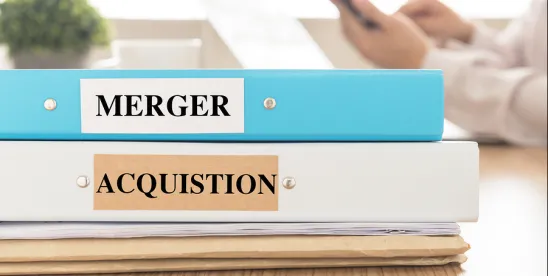The novel coronavirus (COVID-19) pandemic has caused significant volatility in stock prices, resulting in severe disparities between stock prices and many corporations’ view of the intrinsic value of their business. This has, in turn, caused concern about the possibility of well-capitalized investors rapidly building a position in a corporation without paying a fair price and without making public disclosures [1] .
In response to these extraordinary circumstances, in recent weeks there has been a meaningful increase in the number of corporations across different industries implementing poison pills (also referred to as shareholder rights plans), a type of defensive tactic used by a corporation's board of directors against a hostile takeover. According to recent reports, there were 21 poison pills adopted by U.S. corporations in March (16 of which were traditional poison pills with terms of one year or less and 5 of which were tax benefits preservation plans, commonly known as “NOL poison pills,” with terms of approximately three years), compared to only a total of 35 poison pills adopted in 2019.
The basic objectives of a poison pill are to make hostile takeovers unacceptably expensive to the unsolicited acquiror and to encourage prospective acquirors to negotiate with the board rather than attempting a creeping accumulation of control or undertaking a hostile takeover. Similarly, NOL poison pills may be used to prevent an inadvertent ownership change that might limit a corporation’s ability to offset taxable income in future years using its net operating loss (NOL) carryforwards. NOLs are valuable tax assets to a corporation in this economic and financial climate, especially in light of recent changes to the tax laws governing NOLs, as described below.
What are Poison Pills and NOL Poison Pills?
A typical poison pill gives the shareholders of a target company other than the unwelcome acquirer, stockholder activist, or hostile bidder (collectively referred to as “acquirer”) the right to purchase additional stock, either in the target or in the acquirer (if the target is not the surviving entity in the transaction), at a significant discount. The purchase right is usually triggered when the acquirer announces the purchase, or an intent to purchase, stock of the target in excess of a specified percentage (which is commonly set by the board of the target at between 10 percent and 20 percent). The significant dilution of the potential acquirer’s ownership interest and increased acquisition cost after triggering the poison pill typically act as a deterrent to the acquirer. To date, almost all poison pills have expired without ever being triggered.
An NOL poison pill, in the form of a tax benefits preservation plan or a Section 382 rights plan, is adopted for the purpose of protecting the long-term shareholder value of a corporation by preserving the corporation’s ability to use its NOLs. Under Section 382 of the Internal Revenue Code (IRC), a corporation that is subject to an “ownership change” in a three-year period is generally limited in its use of certain tax attributes, including certain NOLs and built-in losses, arising before that ownership change, to offset post-change income. Generally, an ownership change is defined as a greater than 50 percent change in the ownership of stock over a three-year period among shareholders holding 5 percent or more of the corporation’s stock at any time during a three-year testing period. To guard against the inadvertent loss of valuable NOLs caused by such an ownership change, the ownership threshold in an NOL poison pill is normally set slightly below 5 percent, such as 4.99 percent. Due to the relatively low trigger threshold, an NOL poison pill typically provides the board with discretion to exempt acquisitions of greater than the trigger threshold if the board determines that the acquisition has not impaired and will not impair the target’s NOLs.
The valuation and potential use of NOLs require careful analysis by corporate taxpayers, especially in light of recent changes to the use of NOLs made by the Coronavirus Aid, Relief, and Economic Security Act (the CARES Act), signed into law on March 27, 2020. The CARES Act suspends temporarily the taxable income limitation for NOLs imposed by the Tax Cuts and Jobs Act of 2017 (TCJA). For 2020 and prior years, corporations can use NOLs to offset their income by taking an NOL deduction equal to 100 percent of taxable income (rather than the 80 percent cap under the TCJA).
The CARES Act also modifies the rules relating to NOL carrybacks. Under the CARES Act, NOLs incurred by corporations in tax years 2018, 2019, and 2020 can be carried back to each of the five tax years preceding the tax year of the loss. (The TCJA prohibited any such carrybacks.) The new five-year NOL carryback creates potential tax planning opportunities. For example, it might provide a corporation with liquidity – obtaining a cash tax refund currently instead of delaying use of the NOLs by carrying them forward for use in future tax years.
NOL Poison Pills under Delaware Law
The most notable case regarding an NOL poison pill is Versata Enterprises, Inc. v. Selectica, Inc. , 5 A.3d 586 (Del. 2010). In July 2008 and October 2008, Selectica received proposals from its competitor, Versata, to acquire some or all of its business. In mid-November 2008, Versata filed a Schedule 13D, disclosing that its beneficial ownership of the common stock of Selectica had reached 5.1 percent. A few days later, Selectica announced that, for the purpose of protecting the interests of its shareholders by preserving the value of the corporation’s significant NOLs and tax credits, its board had voted to amend its original poison pill to lower the triggering threshold from 15 percent to 4.99 percent. Under the terms of the amended poison pill , any existing shareholders owning more than 4.99 percent at the time of the amendment (such as Versata did) would not trigger the poison pill unless such shareholders further increased their holdings by 0.5 percent or more. From late November 2008 to late December 2008, Versata intentionally triggered the poison pill by increasing its holdings of Selectica’s stock to 6.7 percent.
In late December 2008, Selectica filed a complaint in the Delaware Court of Chancery against Versata and its parent company, seeking a declaratory judgment regarding the validity of its poison pill. In January 2009, Selectica’s board exercised the pill’s exchange provision and ordered the exchange of each right held by shareholders other than Versata for one share of Selectica’s common stock, diluting Versata’s beneficial ownership of Selectica stock from 6.7 percent to 3.3 percent. On the same day, Selectica’s board also declared a dividend of new rights under the poison pill and reloaded the pill.
The court granted Selectica’s request for declaratory relief and upheld the validity of its poison pill.
Shareholders and Proxy Advisers’ Views on NOL Poison Pills
Shareholders and proxy advisers, such as Institutional Shareholder Services, Inc. (ISS) and Glass, Lewis & Co. (Glass Lewis), are often skeptical of poison pills. Proxy advisers may recommend that shareholders vote against directors who have adopted poison pills without shareholder approval. Nonetheless, the significant increase in their adoption amid the COVID-19 crisis demonstrates that companies are worried about hostile acquirors taking advantage of depressed stock prices and/or losing the tax benefits of their NOLs.
In its 2020 Proxy Voting Guidelines , ISS recommended that shareholders vote against an NOL poison pill if the effective term of the pill would exceed the shorter of three years and the exhaustion of the NOLs. It suggested that shareholders take a case-by-case approach on assessing each NOL poison pill, and consider the value of the NOLs, shareholder protection mechanisms of the corporation and existing governance structure including board independence, existing takeover defenses, track record of responsiveness to shareholders and any other problematic governance concerns. In addition, although NOL poison pills were not mentioned, ISS noted in its new guidance (issued on April 8, 2020) that a severe stock price depression as a result of the COVID-19 pandemic is likely to be considered valid justification for adopting a poison pill valid for less than one year; however, ISS reminded boards of directors of the importance of providing detailed disclosure regarding their choice of duration of the pill, or on any decisions to delay or avoid submitting the pill to shareholder approval beyond that period.
In a guidance issued on the same day, Glass Lewis expressed its general support of poison pills that meet certain conditions, including NOL poison pills which are limited in duration (typically three years or less), require shareholder approval for each renewal, and provide a sound rationale for its adoption, such as explaining a legitimate need to preserve existing NOLs and disclosing why the corporation’s current circumstances warrant such measure.
Fiduciary Duty of Boards of Directors in Connection with NOL Poison Pills
As noted, NOL poison pills can protect a corporation’s valuable tax assets. Among other duties, boards owe a fiduciary duty of care toward their corporations. A failure to affirmatively act to implement appropriate protections against an ownership change resulting in the loss of the tax benefits of the corporation’s NOLs could be argued to constitute a breach of fiduciary duty by the board of directors. Accordingly, the board and management may wish to consider working together to understand the value of the corporation’s NOLs and any potential threats of losing the tax benefits from an ownership change caused by hostile bidders and activist shareholders. In conjunction with such analysis, the board and management also may wish to consider implementing an NOL poison pill or at least agreeing to a form of an NOL poison pill (in other words, “on the shelf”) that can be promptly adopted when so needed.
Under Delaware law, when a board adopts a poison pill in the absence of any specific threat, it generally enjoys broad discretion with respect to such a corporate decision if the board reasonably perceives a threat from the possibility of hostile actions. A court will apply the “business judgment” rule and presume that the directors have discharged their fiduciary duties to act in the best interests of the corporation and its shareholders, unless it is shown by a preponderance of the evidence that the directors’ decisions were mainly based on perpetuating themselves in office, or some other improper motive. When a poison pill is adopted in response to an unsolicited change in control, a court will apply the nuanced test set forth in Unocal Corp. v. Mesa Petroleum Co. , 493 A.2d 946 (Del. 1985) to determine whether the pill is valid:
-
Reasonableness test: whether the board has reasonable grounds for believing that a threat to the corporate policy and effectiveness existed; and
-
Proportionality test: whether the terms of the poison pill are reasonable in relation to the threat posed.
In addition, as clarified by the Delaware Supreme Court in Unitrin, Inc. v. American General Corp. , 651 A.2d 1361 (Del. 1995), a proportional response cannot be preclusive or coercive, and must be within the range of reasonable responses to the threat.
Although the original poison pills were used as anti-takeover defenses, Delaware courts have continued to apply Unocal and Unitrin to NOL poison pills, such as in Selectica . In Selectica , applying the business judgment rule and finding that the NOL poison pill adopted by Selectica’s board was valid, the court held that:
-
Protection of the NOLs was a valid corporate objective.
-
Selectica’s board had reasonable grounds to believe that Versata’s stock acquisitions posed a threat to Selectica’s ability to utilize its NOLs.
-
The actions of Selectica’s board in adopting the NOL poison pill, ordering the exchange of common stock for each right, and reloading the pill, were reasonable in response to the perceived threat.
-
Such actions were not an unlawfully preclusive defensive measure.
Things to Consider
In determining whether to adopt an NOL poison pill, a board may consider various factors, including the value of the corporation’s NOLs, any “ownership changes” in the past three years as defined under IRC Section 382, the existence of any shareholders recently accumulating a large number of shares, existing takeover defenses, market capitalization, trading volume, and the relative value of the corporation’s stock compared to peers.
In order to properly discharge its fiduciary duties, prior to and after making the decision to adopt an NOL poison pill, the board may consider taking the following actions:
-
Meet frequently to discuss any threat facing the corporation that may justify adoption of an NOL poison pill;
-
Solicit advice from outside experts, including tax, financial and legal advisors, regarding the value of the corporation’s NOLs, whether the NOLs were subject to any limitations under IRC Section 382, the threats facing the corporation, and the specific terms of the proposed NOL poison pill in light of the potential threat identified;
-
Create a committee to monitor the likelihood of a near-term ownership change;
-
Communicate clearly to shareholders the rationale for adoption and the rationale for any terms that are outside the norm;
-
Compare the terms of the proposed NOL poison pill against the policies of proxy advisers;
-
Submit the NOL poison pill to shareholders for approval if possible, especially if the term of the poison pill is longer than three years; and
-
Monitor the situation, and terminate the NOL poison pill when there is no longer a threat.
ENDNOTES
[1] For example, investors owning less than 5 percent of a public company’s stock are able to continue to accumulate shares during the 10-day period after the 5 percent ownership threshold is reached but before the filing due date of an initial Schedule 13D; and shareholders of companies that do not have a class of securities registered under Section 12 of the Securities Exchange Act of 1934, as amended, are not subject to beneficial ownership reporting requirements at all.






 />i
/>i
